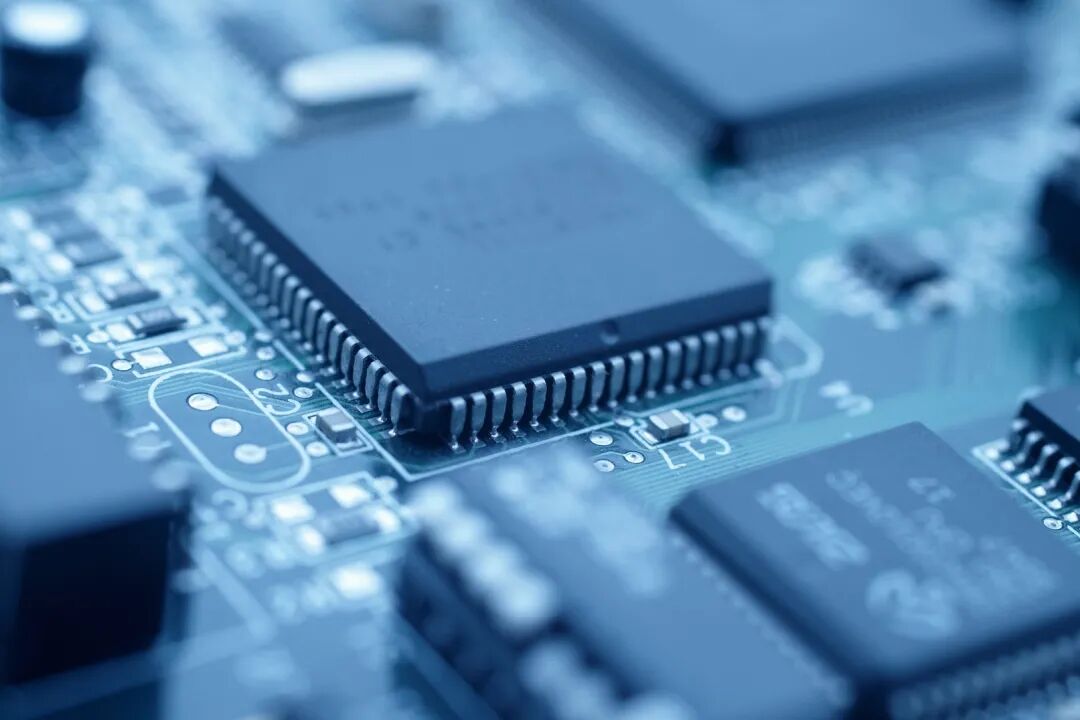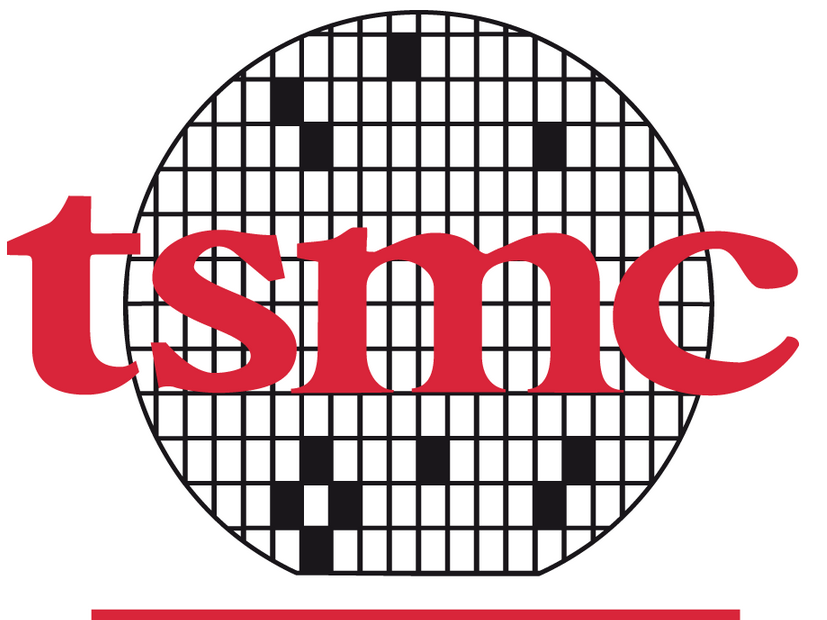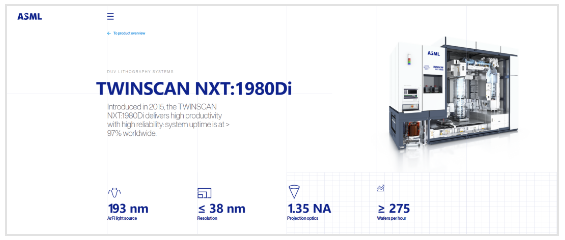
Author| Quantum Jun
Source| Quantum School (ID:quantumschool)
01
“Starting Late” Has Become the Best Excuse
The current state of China’s chip lagging has led to a situation where we can only look to others for guidance.
Over 80% of chips are imported each year, exceeding 2 trillion in 2019.
With such a large import volume, we are being led by the nose.
Many people habitually sigh: let’s endure for a few more years; who can blame us for starting late with nothing?

But has China’s chip technology really started late?
In fact, China began planning in 1956, two years earlier than Japan.
● Clearly, it is a management issue, yet it is attributed to “starting late.”
● Clearly, some individuals are lining their own pockets, yet it is attributed to “starting late.”
● Clearly, it is a problem of an unsound system, yet it is attributed to “starting late.”
● Clearly, it is about deceiving the state, yet it is attributed to “starting late.”
“Starting late” has become a convenient excuse for many failures,
and it has also become a “shield” for many fraudsters.
Yes, in many fields, we are starting with nothing and are late to the game.
But in many areas, our start is not late.
02
The Glory and Pride of Semiconductor Science
Semiconductors got an early start, yet today they still cannot catch up.
● In 1956, semiconductor science and technology were listed as one of the four urgent measures in the national new technology development plan.
● In 1960, the Chinese Academy of Sciences established the Semiconductor Research Institute in Beijing, marking the beginning of China’s semiconductor science and technology development.
● In 1958, the Academy produced China’s first silicon single crystal—what we now refer to as silicon wafers, which are sliced from silicon single crystal rods.
● Seventeen years later, the semiconductor research group at Peking University designed the first batch of three types of (silicon-gate NMOS, silicon-gate PMOS, aluminum-gate NMOS) 1K DRAM dynamic random-access memory, which was five years later than Intel’s C1103 but four to five years earlier than South Korea and Taiwan.
However, this was the last glory of China’s integrated circuit industry.
Today, China has no voice in semiconductor science and technology.
03
Integrated Circuits Could Have Outpaced TSMC
Even with a stagnation in development, there were still opportunities in the 1980s.
In the early 1980s, two companies related to integrated circuits were established in mainland China and Taiwan.
One started from the Institute of Computing Technology of the Chinese Academy of Sciences, founded in 1984, Lenovo, which began as a computer sales agent and eventually grew into a PC manufacturer and supplier.

Three years later, TSMC was established as the world’s first integrated circuit manufacturing service company, currently holding over 50% market share and being the largest and most advanced wafer foundry globally.
The comparison of the founders of these two companies is also interesting.
Mechanical engineer Morris Chang recognized the trend of the semiconductor industry’s growth and segmentation, pioneering the semiconductor foundry industry, and has since led the development of semiconductor process technology.

Meanwhile, the founder of Lenovo, Liu Chuanzhi, worked at China’s first institution dedicated to computer technology research, but he chose a development path focused on “trade, industry, and technology.”
We could have competed in integrated circuits, but we chose to give up.
Today, TSMC has become a top-tier star enterprise globally.
04
The Lithography Machine Debacle: A Need for Reevaluation
The lithography machine is the core equipment for chip manufacturing, and its precision determines the performance ceiling of chips.
But did China start late in lithography machines?
In 1965, China developed the 65-type contact lithography machine.
At that time, the Dutch company ASML, which later dominated the lithography machine market, had not yet been established.
In 1977, the GK-3 semi-automatic lithography machine was born.
● In 1980, Tsinghua University developed the fourth-generation distributed projection lithography machine, achieving a precision of 3 microns, which was already close to the international mainstream level, second only to the United States.
● In 1982, the KHA-75-1 lithography machine developed by the Academy’s 109 Factory was not inferior to the standards of the time, and the most conservative estimate is that it was less than four years behind the most advanced Canon at that time, and from the sales of the JKG series to this day, it still has good usability.
● In 1985, the 45th Institute of the Ministry of Electromechanical Industry developed a prototype of a stepper lithography machine, which was certified by the Ministry of Electronics Technology to have reached the level of the American 4800DSW. The gap between China and foreign countries in stepper lithography machines was no more than seven years (the U.S. had it in 1978).
However, subsequently, China’s lithography machine technology encountered a “Waterloo”:
At the “Twelfth Five-Year” Science and Technology Achievement Exhibition, the best lithography machine produced in China had a processing precision of 90 nanometers.
This is equivalent to the level of the Pentium 4 CPU released in 2004, while foreign countries have achieved levels of a few nanometers.
What caused the lithography machine debacle? What are the underlying reasons?
05
Aerospace Engines: A Persistent Concern
Aerospace engines, like lithography machines, represent the pinnacle of human technological development.
They are comprehensive products of the post-industrial era and are the crown jewels of modern industry.
China’s aerospace engine development is not later than others.
When the American Pratt & Whitney launched the world’s first turbofan engine in the 1950s, China was not far behind.
The turbofan 5 project initiated in 1963 and the turbofan 6 project in 1964 were exciting developments.
However, due to the well-known ten years, both projects failed and were halted.
Shortly after, the turbofan 9 took 30 years to pass domestic engineering technology certification and was approved for mass production.
Since then, the gap between China’s aerospace engines and the U.S. has been fixed at 30 years.
Compared to the dominant U.S. aerospace engines, the F-35 uses the Pratt & Whitney F-135 series engine, which has a service life of 8000 hours, more than four times that of China’s Taihang engine.
In the civil aviation engine sector, China still does not have a high bypass ratio turbofan engine that can be installed.
Because engines are related to military warfare, this concern is even more pronounced.
While the flames ejected from aerospace engines may look beautiful like the aurora, for many who understand the truth, it is a heart-stopping sight.
06
China’s Large Aircraft: A Permanent Pain for Aviation Professionals
Airbus and Boeing now dominate the global aviation industry.
China purchases large aircraft every year, either being exploited by Boeing or Airbus.
In fact, China did not start late in large aircraft manufacturing.
In the early 1970s, China began a project codenamed 708—manufacturing large jet airliners, which was named “Yun-10” and took to the skies in the early 1980s.
The “Yun-10” had a maximum range of 8600 kilometers, a maximum speed of 930 kilometers per hour, a maximum takeoff weight of 110 tons, and a maximum flight altitude of over 11,000 meters.
Notably, this aircraft successfully completed seven test flights on the so-called “death route” in Tibet, making the “Yun-10” China’s first domestically produced aircraft designed according to British and American airworthiness regulations.

The “Yun-10” was the starting point of the dream for domestically produced large aircraft, marking China’s first attempt to leap from 10-ton to 100-ton aircraft design.
The flight time of the “Yun-10” was mostly in the subsonic range, a speed only achieved by the Soviet Union’s “Tu-104,” the British “Trident,” and American Boeing aircraft at that time.
Thus, China became the fourth country after the U.S., the Soviet Union, and the European Union to produce 100-ton class aircraft.
Due to various reasons, the “Yun-10” project, which cost 537.7 million RMB, was shelved, and China’s large aircraft manufacturing industry, which started only two years later than Airbus, has since stagnated.
07
Operating Systems: We Are Still Held by Others
The emergence of PCs led to Microsoft’s success, while the mobile internet has created the Android world and the Apple empire.
Their success relies on their unique operating system ecosystems.
China’s attempt to build an operating system ecosystem has almost no chance:
The PC sector is firmly controlled by Windows, while the mobile phone sector is dominated by Android and Apple.
Most domestic operating systems are based on Linux for secondary development, accounting for less than 1% of the global market share.
The flourishing scene of China’s IT industry does not narrow this technological gap.
Chinese smartphone manufacturers’ free use of Android comes at the cost of potentially being “cut off” by Google at any time.
If the Windows system were banned, would there be a mature operating system available as a “backup” in China?
The importance of a completely self-controlled domestic operating system for many fields in China is self-evident.
Unfortunately, despite years of shouting slogans, a complete ecosystem for domestic operating systems has yet to be established.
We began developing Red Flag Linux in the early 21st century, but unfortunately, it remains constrained to this day.

We lack the “roots” of an operating system ecosystem, and the surface prosperity may wither at any time.
08
Often, It’s Not About Starting Late
From semiconductors to operating systems, from engines to large aircraft, China has not started late; there are many similar examples…
“Starting late” is not the whole truth; the greater truth is:
Disrespect for Originality
To borrow a computer term, “when others open source, we go independent.” Disrespect for original power, lack of respect for intellectual property, and always focusing on commercial realization.
Neglect of Researchers
Researchers generally have low incomes, not only compared to popular stars but often “making an atomic bomb is not as good as making a tea egg.”
If we do not protect these individuals, how can we talk about technological progress and overtaking on curves?
Short-sighted Market, Lack of Long-termism
Most high-tech research is not a short-term endeavor; it requires strong mental strength and time accumulation. If we only see short-term benefits and realization capabilities, lacking a long-term mindset, we will prefer to borrow rather than buy, and rent rather than borrow.
Problems in Management Systems
In management systems, responsibilities are unclear, and rewards and punishments are not distinct. When someone needs to “take the blame,” no one dares to truly take responsibility.
Half-Plan, Half-Market Distortion
Incomplete reforms, power rent-seeking, and collusion between officials and businesses lead to a vicious cycle of market injustice.
Unreasonable Subsidy Systems
Some matters indeed require national-level support.
However, the current support and subsidies from the state for industries have become a means of interpersonal transactions and public relations resources, making it difficult for those who genuinely do practical work to receive subsidies, while those who exploit loopholes reap huge profits.
Subsidies are not given where they should be, and are given indiscriminately where they should not be.
……
Take today’s chip industry as an example: how many people genuinely want to do practical work?
In recent years, various regions have launched “chip-making movements”:
● Guangzhou invested in building Yuexin, Chengdu introduced Unisoc,
● Nanjing introduced TSMC, Wuxi built the Huahong base,
● Xiamen introduced UMC, and Chongqing introduced GlobalFoundries,
● Hefei invested in Changxin, and Wuhan introduced Hongxin.
Even some third- and fourth-tier cities are engaging in chip-making movements…
How many of these companies genuinely want to make chips for the country, and how many are just looking to exploit government resources?
09
The Hongxin Case: Manufacturing Chips or Deceiving for Subsidies?
We have seen too many companies deceiving for subsidies; their goal is to get a sum of money and then say something.
Even if the end result is a mess, no one will take responsibility.
Take Wuhan Hongxin as an example; this chip company, established in 2017, started with a 14nm process, followed by 7nm, claiming to have a monthly capacity of 30,000 wafers,making chip manufacturing seem no different from selling tea eggs.
At the same time, they showcased a series of flashy operations:
● They spent heavily to hire Dr. Jiang Shangyi, former COO of TSMC, as CEO.
● They spent a fortune to purchase a lithography machine from ASML, the NXT:1980Di, which supports 7nm chip processes.
To welcome this invaluable asset, Hongxin held an entrance ceremony, with a backdrop boldly stating“Hongxin Serves the Country, Dreams Fulfilled for China” in large characters.

In the Wuhan Municipal Development and Reform Commission’s “2020 Major Construction Project Plan,”the total investment for Wuhan Hongxin Semiconductor is 128 billion RMB, with the initial investment accounting for the largest share of advanced manufacturing projects.
Everything was in place, just waiting for the wind to blow. Next, they should produce chips to serve the country, right?
However, reality once again taught us how to behave:this company has recently been reported to have run out of funds, embroiled in lawsuits, and the 1980Di has been mortgaged for survival.
What will the final outcome be? We can probably guess.
10
Stop Using “We Started Late” as an Excuse
The “chip unfinished buildings” are entirely within expectations.
Looking back at the 2003 Hanxin incident, there is essentially no difference.
The once inspiring “Hanxin No. 1” had leaders and top experts standing behind it.
The truth is that the founder sanded off the Motorola chip and added the Hanxin logo.
Such a blatant scientific fraud is astonishing.
If we do not genuinely do the work, what does it matter if we start early?
Unfortunately, the Hanxin incident has long been forgotten.
Most people see today’s chip predicament and will simply say:“We started too late.”
This kind of logic will make those who exploit the system smile with glee.
Companies that do practical work have no direct relationship with when they started.
Huawei entered the security field in 1993 and defeated the industry leader TI at that time;
Alibaba Cloud was founded in 2009 and has now become the third-largest cloud computing platform globally;
TikTok officially launched in 2016 and is at the forefront of the internet in application.
……
A confident nation or enterprise dares to tear off the “starting late” excuse and forge ahead.
What China should do is pursue truthfulness, improve market competition, ensure fairness and freedom, act according to the law, and respect intellectual property, rather than using “starting late” as an excuse.
We were once poor and empty-handed, but now we have become a major world economy.
Stop casually saying “we started too late,” as it sounds particularly unprincipled.
In fact, Apple’s smartphone was only launched in 2008, and the Android system only became popular after 2010.
In cutting-edge technology fields, who hasn’t started from scratch?
“This article is reprinted from the public account Quantum School—focusing on education in the field of natural sciences (mathematics and physics).”
Please help by clicking “Read” at the bottom right corner after reading the article. Just one click a day will ensure my articles appear at the top of your subscription list, so you won’t miss important information. Welcome to add Da Mao Finance to your “Starred”.

I understand that many readers may find it inconvenient to click “Read,” so I suggest you browse my previous articles; generally, browsing about 8 articles will ensure my public account articles are pushed to you promptly.

Header Image| Ritomm
Layout| Seagull
Click the image to join Da Mao Finance~





